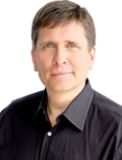HealthManagement, Volume 23 - Issue 4, 2023
In today’s demanding and fast-paced medical environment, physicians are challenged by time constraints, information overload, and waning job satisfaction. Assistive AI technologies offer promising solutions to the signal-to-noise conundrum in medicine.
Key Points
- The avalanche of clinical and administrative information demands a balance between discerning the relevant signal and filtering out the incessant noise.
- Symptoms of burnout, disillusionment, and detachment have become increasingly common.
- There is an urgent and unmet need for solutions that address the symptoms and underlying systemic issues.
- The emergence of assistive AI technologies, such as GPT models, offers promising solutions to the signal-to-noise conundrum in medicine.
Claude Shannon’s Signal-to-Noise Ratio: A Foundational Framework
The pioneering work of Claude Shannon in information theory has left an indelible mark on modern communication, computer science, and digital media (Hardesty 2010). His groundbreaking 1948 paper, “A Mathematical Theory of Communication,” introduced the key concepts of signal-to-noise ratio, channel capacity, and error-free transmission (Shannon 1948).
In this context, the signal represents meaningful information, while noise refers to irrelevant or distracting information. The ratio between the signal and noise determines the quality and efficiency of information transmission. A high signal-to-noise ratio ensures a clearer message, while a low ratio leads to confusion and inefficiency.
The Physician’s Challenge: Signal-to-Noise in Medical Practice
In today’s demanding and fast-paced medical environment, physicians find themselves at the intersection of a multifaceted struggle, challenged by time constraints, information overload, and waning job satisfaction. The pressure to see more patients, maintain meticulous electronic health records, and stay current with the ever-changing landscape of medical research and guidelines leaves physicians in a relentless race against the clock.
Time, a once manageable resource, now becomes a limiting factor that penetrates every aspect of their professional life. Lengthy working hours encroach upon personal life and family time, while the quest to remain updated with the latest advancements stretches the limits of cognitive capacity. The avalanche of information, both clinical and administrative, demands a delicate and taxing balance between discerning the relevant signal and filtering out the incessant noise. This information glut not only burdens the physician’s cognitive abilities but also threatens the very core of patient-centred care, where empathy and individualised attention are vital.
Add to this the burgeoning administrative tasks that often feel disconnected from the actual practice of medicine, and the picture of a strained profession becomes clear. The bureaucratic demands placed on clinicians, such as compliance with healthcare regulations and engagement with various reporting systems, divert valuable time and energy away from clinical care, further straining the physician-patient relationship.
These factors converge to form a potent mix that contributes to a tangible decline in job satisfaction. Symptoms of burnout, disillusionment, and detachment from the core values that initially drew individuals to the medical profession have become increasingly common. The idea of healing, once a passionate pursuit, risks being overshadowed by the unyielding demands of modern medical practice.
Within this intricate web of challenges lies an urgent and unmet need for solutions that address not merely the symptoms but the underlying systemic issues. From harnessing the potential of AI and Large Language Models to aid in information management to reimagining workflow structures that prioritise physician well-being, the path forward must be marked by innovation, empathy, and a renewed focus on the humanistic principles that define medicine. It’s a complex but crucial endeavour that seeks to restore balance, purpose, and joy to a profession dedicated to the noble and compassionate art of healing.
AI and LLMs: Indispensable Tools for Modern Medicine
In an era where technology innovation drives progress, the emergence of assistive AI technologies such as GPT models offers promising solutions to the signal-to-noise conundrum in medicine. A recent study showcasing the impact of ChatGPT on mid-level professional writing tasks did not specifically involve physicians, yet its findings carry important implications for the clinical environment (Noy and Zhang 2023).
A remarkable 40% increase in efficiency in professional writing tasks translates into a model that could be applied to medical documentation, patient communication, and more. Imagine the possibilities for healthcare professionals: faster completion of complex tasks could free up critical time, allowing clinicians to engage more deeply with patients, participate in further education, and conduct critical research.
Meanwhile, the 18% improvement in quality observed in the study is not merely about enhancing writing; it’s about fostering excellence. By extrapolating these results to the clinical setting, we could see a higher standard in the precision of medical records, clarity of patient instructions, and accuracy of diagnostic reporting.
The study’s exploration did not stop at efficiency and quality; it also illuminated a noteworthy increase in satisfaction among the participants. This uplift in contentment transcended mere gratification with task completion and unearthed a transformative shift in how work is approached. When extrapolated to the demanding sphere of medicine, this finding reveals critical value that may resonate deeply with physicians. The application of AI can transmute the drudgery of certain repetitive or administrative tasks into a vehicle for personal creativity and satisfaction. Instead of being mired in routine procedures and paperwork, medical professionals could harness technology to reallocate time and mental energy towards innovative care strategies, cutting-edge research, or meaningful patient interactions. This potential evolution in task management not only offers the promise of enhanced professional fulfilment but also opens a path towards reclaiming the joy and human connection that often drew individuals to the practice of medicine in the first place. It’s a resonant insight that reimagines technology not as a mere tool but as a partner in reviving and nurturing the core essence of medical practice.
From Option to Imperative
The integration of AI and LLMs in medical practice has shifted from an optional innovation to an imperative need. The triad of productivity accomplishment—efficiency, quality, satisfaction—is a synergistic force that can redefine medical practice.
The insights from the recent study present a compelling vision for healthcare, where technology enhances human capability rather than merely replacing it. By optimising the signal-to-noise ratio in clinical care, AI can usher in a new era of precision, compassion, innovation, and a renewed sense of purpose.
In the end, Claude Shannon’s seminal concepts find foundational application in the very heart of human wellness and care, guiding clinicians in their vital mission and transforming the practice of medicine for the better. It’s a vision where technology and humanity collaborate, achieving new heights of excellence in the ever-challenging and inspiring field of healthcare.
Conflict of Interest
None.
References:
Hardesty L (2010) Explained: The Shannon limit. MIT News. Available at https://news.mit.edu/2010/explained-shannon-0115
Noy S, Zhang W (2023) Experimental evidence on the productivity effects of generative artificial intelligence. Science. 381(6654):187-192.
Shannon CE (1948) A mathematical theory of communication. Bell System Technical Journal. 27(3):379-423.
















